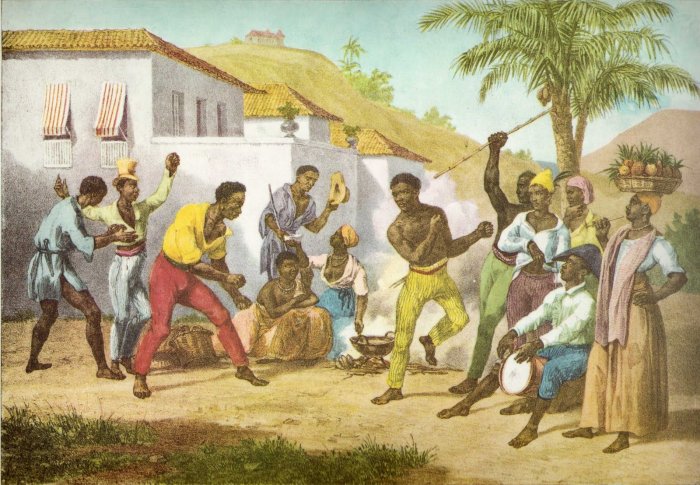Capoeira: Ancient Martial Art Disguised As A Dance Became A Symbol Of Resistance To Oppression
Ellen Lloyd - AncientPages.com - Capoeira is an unusual ancient martial art because it resembles more dancing than fighting. Capoeira was originally invented hundreds of years ago in Brazil by West African descendants.
Runaway slaves had to find a way to defend themselves against attackers, and that’s when Capoeira was born. Capoeira was banned due to its “dangerous nature.” As a result, practitioners disguised it as a dance by which it lives today.
Men train Capoeira on the beach. Credit: Adobe Stock - danillaophoto
Capoeira became a symbol of hope and resistance to oppression and a source of pride for the Brazilian people.
Tracing the history of Capoeira takes us to the 17th century and the beginning of African slavery in Brazil. It was a time when Portuguese colonists began exporting slaves to their colonies. Most of the slaves originated from West Africa. With its vast territory, Brazil received most of the slaves; almost 40% of all slaves were sent through the Atlantic Ocean.
Life for the slaves was difficult. They lived in ghettos where conditions were horrible. The poor slaves were forced to work hard and often suffered physical punishment for small misbehaviors.
Although slaves often outnumbered colonists, rebellions were rare due to a lack of weapons, harsh colonial law, disagreement between slaves coming from different African cultures, and lack of knowledge about the new land. All this, together, discouraged the slaves from launching a rebellion.
Capoeira or the Dance of War by Johann Moritz Rugendas, 1825, published in 1835
But then, one day, the ancient martial art we today call Capoeira was born. It became a symbol of hope and a tool of survival for slaves who escaped.
Slaves who managed to escape gathered together and established so-called quilombos, primitive settlements in far and hard-to-reach places.
The largest of these settlements was Quilombo dos Palmares, located in the state of Alagoas. It consisted of many villages which lasted more than a century. Quilombo dos Palmares had remarkable Capoeira fighters who managed to resist at least 24 small attacks and 18 colonial invasions.
Portuguese soldiers sometimes said that it took more than one dragoon (mounted infantry) to capture a quilombo warrior since they would defend themselves with a strangely moving fighting technique. The provincial governor declared it is harder to defeat a quilombo than the Dutch invaders.
Capoeira is an unusual ancient martial art because it resembles dance more than fighting. Credit: Marie-Lan Nguyen - CC BY 2.5
By the end of the 19th century, slavery came to an end in Brazil. This became a social problem because many free slaves had no jobs. Some started to use their knowledge of Capoeira in unconventional ways. Criminals and warlords used capoeiristas as bodyguards and hitmen. Groups of capoeiristas, known as maltas, raided Rio de Janeiro.
In 1890, Brazilian authorities banned Capoeira because of its dangerous nature. People who practiced Capoeira would be arrested, tortured, and often mutilated by the police.
This did not stop the ancient martial art that became disguised as a dance and is still practiced today. Skilled capoeiristas can even disguise an attack as a friendly gesture. Knowledge of this unusual ancient martial art spread, and nowadays, it is not only a martial art but an active exporter of Brazilian culture all over the world.
Updated on September 22, 22023
Written by Ellen Lloyd – AncientPages.com
Copyright © AncientPages.com All rights reserved. This material may not be published, broadcast, rewritten or redistributed in whole or part without the express written permission of AncientPages.com
More From Ancient Pages
-
 Giant Bath Tub Built For Tsar Alexander I – Why Was It So Large?
Featured Stories | Jul 11, 2018
Giant Bath Tub Built For Tsar Alexander I – Why Was It So Large?
Featured Stories | Jul 11, 2018 -
 10 Mysterious Ancient Manuscripts With Hidden Secrets
Featured Stories | May 27, 2016
10 Mysterious Ancient Manuscripts With Hidden Secrets
Featured Stories | May 27, 2016 -
 Library Of Celsus: Beautiful Classic Monument In Ephesus That Stored 12,000 Scrolls
Civilizations | Nov 14, 2018
Library Of Celsus: Beautiful Classic Monument In Ephesus That Stored 12,000 Scrolls
Civilizations | Nov 14, 2018 -
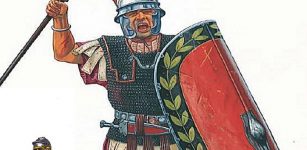 What Was Legio Martia And Why Were The Roman Soldiers Called The Martians?
Ancient History Facts | Jan 5, 2018
What Was Legio Martia And Why Were The Roman Soldiers Called The Martians?
Ancient History Facts | Jan 5, 2018 -
 Elli – Norse Goddess And Symbol Of Old Age That No One Ever Could Defeat
Featured Stories | Dec 21, 2017
Elli – Norse Goddess And Symbol Of Old Age That No One Ever Could Defeat
Featured Stories | Dec 21, 2017 -
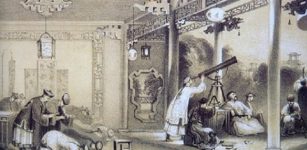 On This Day In History: Sunspot Observed By Chinese Astronomers During The Han Dynasty – On May 10, 28 BC
News | May 10, 2016
On This Day In History: Sunspot Observed By Chinese Astronomers During The Han Dynasty – On May 10, 28 BC
News | May 10, 2016 -
 On This Day In History: The Gregorian Calendar Implemented – On Oct 5, 1582
News | Oct 5, 2016
On This Day In History: The Gregorian Calendar Implemented – On Oct 5, 1582
News | Oct 5, 2016 -
 Ancient DNA Helps Reveal Social Changes In Africa 50,000 Years Ago That Shaped The Human Story
DNA | Jun 7, 2022
Ancient DNA Helps Reveal Social Changes In Africa 50,000 Years Ago That Shaped The Human Story
DNA | Jun 7, 2022 -
 St. Swithin’s Day And The 40 Days’ Weather Prophecy
Featured Stories | Jul 15, 2023
St. Swithin’s Day And The 40 Days’ Weather Prophecy
Featured Stories | Jul 15, 2023 -
 Legendary Pirate Black Sam And His Ship Discovered Off The Coast Of Cape Cod
Archaeology | Feb 12, 2018
Legendary Pirate Black Sam And His Ship Discovered Off The Coast Of Cape Cod
Archaeology | Feb 12, 2018 -
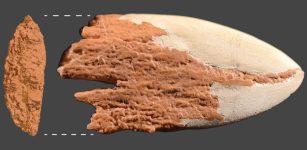 Evidence Oldest Bone Spear Point In The Americas Is 13,900 Years Old
Archaeology | Feb 3, 2023
Evidence Oldest Bone Spear Point In The Americas Is 13,900 Years Old
Archaeology | Feb 3, 2023 -
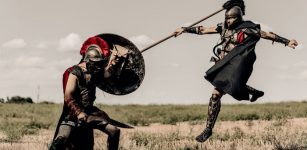 Why Was The Spartan Army So Successful?
Ancient History Facts | Apr 15, 2022
Why Was The Spartan Army So Successful?
Ancient History Facts | Apr 15, 2022 -
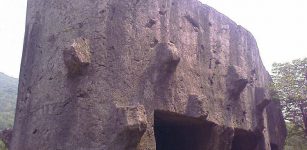 Gigantic Unfinished Stone Structures Cut With Amazing Stone-Working Techniques
Civilizations | Sep 21, 2015
Gigantic Unfinished Stone Structures Cut With Amazing Stone-Working Techniques
Civilizations | Sep 21, 2015 -
 5,000-Year-Old Stone Paint Palette Unearthed In Küllüoba Mound
Archaeology | Sep 9, 2020
5,000-Year-Old Stone Paint Palette Unearthed In Küllüoba Mound
Archaeology | Sep 9, 2020 -
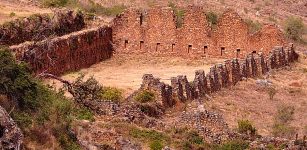 Inca Llajta: Largest And Most Impressive Inca Complex In Bolivia
Civilizations | Dec 6, 2018
Inca Llajta: Largest And Most Impressive Inca Complex In Bolivia
Civilizations | Dec 6, 2018 -
 Manasota People: Will 1,300-year-Old Village Tell Us About Their Lives?
Archaeology | Jan 11, 2016
Manasota People: Will 1,300-year-Old Village Tell Us About Their Lives?
Archaeology | Jan 11, 2016 -
 Unraveling The Mystery Of The Phoenix Bird – Symbol Of The Sun And Eternal Rebirth Of Life
Egyptian Mythology | Nov 6, 2023
Unraveling The Mystery Of The Phoenix Bird – Symbol Of The Sun And Eternal Rebirth Of Life
Egyptian Mythology | Nov 6, 2023 -
 Robert The Bruce: Mighty King Of Scots And Great Scottish Hero
Featured Stories | Oct 13, 2016
Robert The Bruce: Mighty King Of Scots And Great Scottish Hero
Featured Stories | Oct 13, 2016 -
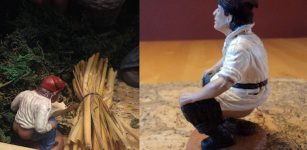 Caganer: The Pooping Man Is Part Of The Catalonian Christmas Tradition And Nativity Scene
Ancient Traditions And Customs | Dec 17, 2017
Caganer: The Pooping Man Is Part Of The Catalonian Christmas Tradition And Nativity Scene
Ancient Traditions And Customs | Dec 17, 2017 -
 Norse Religion Was Different Than Previously Thought – New Study Reveals
Archaeology | Feb 27, 2021
Norse Religion Was Different Than Previously Thought – New Study Reveals
Archaeology | Feb 27, 2021


